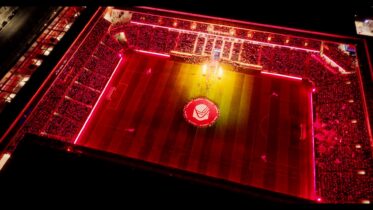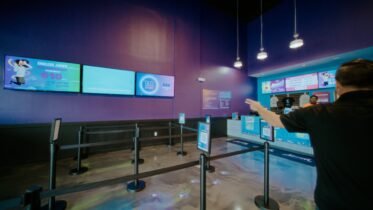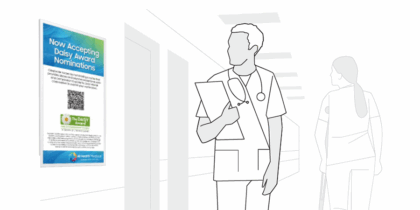The sensors and actuators of the Internet of Things are becoming the programming chiefs for digital signage networks. Old school digital signage programming is all about planning and producing content well in advance, and then plotting when and where those media files will play. The new way of doing content is all about data – live, and shaped (and re-shaped) by what’s going on.
The millions, billions and soon trillions of connected devices that will be logging and reporting everything from the temperature on remote water pumps to step counts logged by smart watches are all not only influencers on content, they can BE the content.
This is starting to happen in two distinct ways:
First, pre-existing content is triggered by what the data tells it. That can manifest itself in many ways. In large offices, hospitals and higher education campuses, management systems are being mapped to existing system to effectively inform what should be on screens, and override programming based on settings. It can be simple, like greeting staff when they arrive at a building and use the access control system. It can be lifesaving when there are emergencies, and planned messaging automatically kicks in and directs people to safe areas and exits.
Second, all that data can start to be visualized. In places like airports and rail stations, on manufacturing floors and in customer contact centers, data has for years had very basic visualizations – putting numbers like departure times and call processing times on screens, and drawing basic charts.
Web services technologies like HTML5 have changed the game and made it possible to use live data for visually compelling and ever-changing programming.
A video screen at the headquarters of a logistics company can, for example, shift from reporting basic numbers to running a series of content elements – steadily refreshed – that show all its key performance indicators and where its trucks are around a region or country, overlaid on maps.
Sounds like a full-time job for a content producer, but it’s not. With the data mapped to internal systems, and the visual elements pre-coded, the visuals just happen, changing as the information changes.
The next generation of digital signage gets out of programming and applications silos, and fully leverages the broader content and information landscape. A new breed of smart signs has intelligence and connectivity built-in.
Visualized data is already a fast-growing medium online, but still in its earliest days in digital signage. The newest smart signs, like our Smart Signage Platform models, need only a web URL to launch programming.
This makes it very easy for developers to migrate their rich, visually compelling data shows to connected displays in any environment.
Want to learn more about the Internet of Things and Smart Digital Signage? Read the whitepaper below.
![The Internet of Things on Display [White Paper]](https://s47295.pcdn.co/wp-content/uploads/2015/06/16653092506_fb50e77eba_z.jpg)







